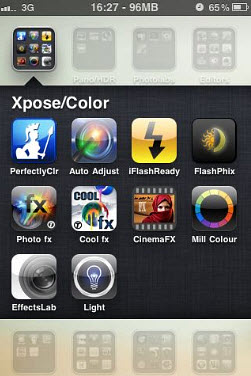A recent report has shown that most of the leading Android and iOS applications have been hacked.
The third annual “State of Mobile App Security” report has now been released, and what it has revealed was that mobile security in both Android and iOS based applications is not high enough to be able to keep hackers from getting in.
How many have been hacked? 87 percent of the top 100 paid Apple iOS apps and 97 percent of the top paid Android apps!
Beyond the rise in mobile security breaches in apps that are occurring among the Popular Free apps that are most frequently downloaded, the report from this year also showed that there was evidence of hacking that was quite commonplace in the applications in the following categories: financial services, retail and merchants, healthcare and medical. Overall, these were primarily driven by hacks in mobile apps for Android devices.
This shows that there remains a serious concern with regards to mobile security in top apps of all types and forms.
 The report is produced by Arxan and it has provided an update over the indicators that have been published in previous years with regards to the prevalence of mobile security issues in the form of hacked apps over the two largest smartphone platforms, Android and iOS. Considering the rapid growth of the global mobile app usage, the insight provided in this report could be quite important.
The report is produced by Arxan and it has provided an update over the indicators that have been published in previous years with regards to the prevalence of mobile security issues in the form of hacked apps over the two largest smartphone platforms, Android and iOS. Considering the rapid growth of the global mobile app usage, the insight provided in this report could be quite important.
This report also projected that there will be an increase in the download rate of free mobile apps of 99 percent, to the point that they will reach 253 billion downloads in 207. In the paid app download category, it is expected that there will be a 33 percent increase by 2017, when it will reach 15 billion downloads.
The mobile security risk associated with hacking in apps is remaining stead with Android apps, as the figures showed that 97 percent of the top paid apps have been hacked. That said, the risk of hacking in the top paid iOS apps is considerably higher now than it had been last year, as it is now at 87 percent, compared to last year’s 56 percent.
Denny |
November 26, 2014
Shoppers with smartphones and tablets are using those devices to research products and discounts.
This year, more than ever before, it is expected that consumers will be using mobile apps and other m-commerce opportunities on their smartphones and tablets to be able to compare products and prices and to find better deals, particularly throughout the opening weekend of the holiday shopping season.
This is making it look as though this weekend will be breaking all previous mobile shopping records.
The current prediction of the Consumer Electronics Association (CEA) are that mobile apps and websites will be used more this weekend than in any other starting weekend of the holiday season. They forecast that 103.3 million Americans will be shopping online – using laptops, desktops, smartphones, and tablets – from Thanksgiving through Cyber Monday 2014. This will represent an increase in online shopping over that weekend of 6.1 million shoppers when compared to last year.
The report showed that mobile apps and websites will also be used far more than last year.
 It determined that the total number of Americans who planned to shop over the Thanksgiving holiday weekend will be about 143 million people. Among them, 89 million American adults have the intention of purchasing some form of consumer technology products. The use of mobile devices will come into play at this time in order to compare the various products that are available and to be able to locate the best deals that can be found from retailers that sell them.
It determined that the total number of Americans who planned to shop over the Thanksgiving holiday weekend will be about 143 million people. Among them, 89 million American adults have the intention of purchasing some form of consumer technology products. The use of mobile devices will come into play at this time in order to compare the various products that are available and to be able to locate the best deals that can be found from retailers that sell them.
Almost three out of every four consumers (74 percent) expect to use their smartphones, tablets, or cell phones while shopping, whether to access shopping applications, to consult the mobile web, or simply to call someone else and ask questions with regards to products or purchases that are being considered. This is the highest total that has ever been recorded by the annual survey conducted by the CEA.
According to the chief economist of the CEA, Shawn DuBravac, “Consumers are becoming more comfortable with the security protocols and in using new payment options as they are being introduced to the marketplace.” He also pointed out that when it comes to mobile apps for payments “there are more options and choices” than there have ever been.
 The report is produced by Arxan and it has provided an update over the indicators that have been published in previous years with regards to the prevalence of mobile security issues in the form of hacked apps over the two largest smartphone platforms, Android and iOS. Considering the rapid growth of the global mobile app usage, the insight provided in this report could be quite important.
The report is produced by Arxan and it has provided an update over the indicators that have been published in previous years with regards to the prevalence of mobile security issues in the form of hacked apps over the two largest smartphone platforms, Android and iOS. Considering the rapid growth of the global mobile app usage, the insight provided in this report could be quite important.
 It determined that the total number of Americans who planned to shop over the Thanksgiving holiday weekend will be about 143 million people. Among them, 89 million American adults have the intention of purchasing some form of consumer technology products. The use of mobile devices will come into play at this time in order to compare the various products that are available and to be able to locate the best deals that can be found from retailers that sell them.
It determined that the total number of Americans who planned to shop over the Thanksgiving holiday weekend will be about 143 million people. Among them, 89 million American adults have the intention of purchasing some form of consumer technology products. The use of mobile devices will come into play at this time in order to compare the various products that are available and to be able to locate the best deals that can be found from retailers that sell them.